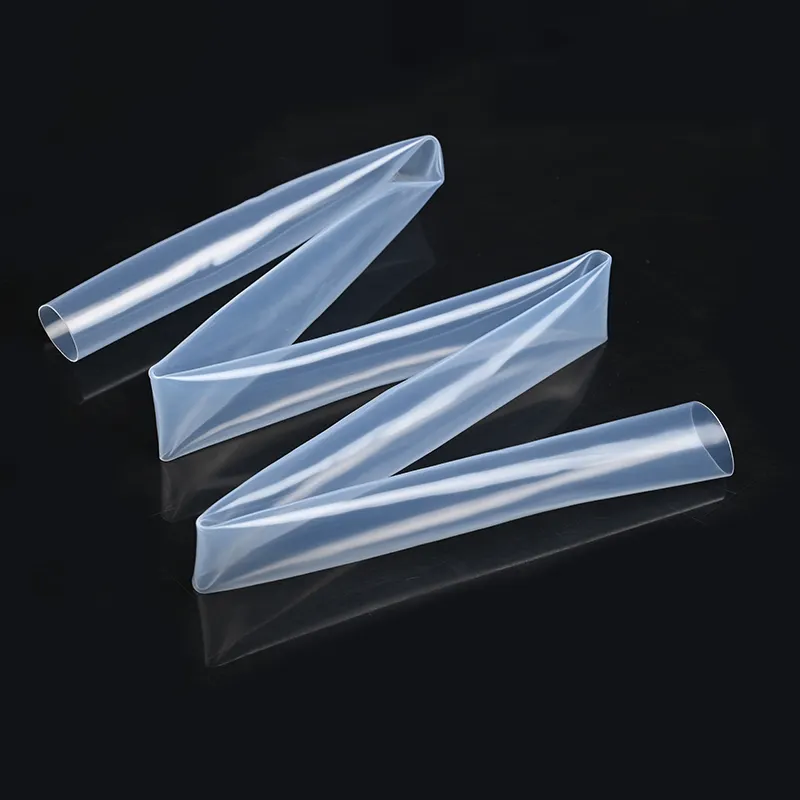Understanding the Role of Medical Silicone Tubes in Life Support Equipment
Medical devices have revolutionized healthcare, transforming the way we diagnose, treat, and manage various conditions. Among these devices, medical silicone tubing plays a crucial role as an indispensable component in life-saving medical devices. These tubes are not just simple aids; they are intricately designed to ensure optimal functionality, patient safety, and efficient care delivery. Let's delve into the significance of medical silicone tubing, exploring their unique properties, diverse applications, and the advancements in their production.
The Unique Properties of Medical Silicone Tubing
Medical silicone tubing boasts three key attributes: biocompatibility, sterility, and flexibility. Biocompatibility ensures these tubes are safe for use in the body without causing adverse reactions. Sterility minimizes the risk of infection, which is crucial in life-support environments. Flexibility allows them to conform to various shapes and sizes, ensuring they can be used in multiple applications without breaking.
For example, in dialysis machines, this flexibility allows the tubing to be maneuvered around sensitive areas in the patient's body, ensuring efficient waste filtration. In ventilators, it enables the tubing to accommodate the complex anatomical structures of the respiratory system, ensuring clear airway clearance. In infusion pumps, it allows the tubing to navigate intricate pathways, delivering medications accurately and maintaining patient safety.

Applications in Life-Saving Medical Devices
Medical silicone tubing is integral to numerous life-saving medical devices, underscoring its critical role in healthcare. In dialysis machines, they ensure clear blood flow by facilitating efficient waste filtration. Ventilators use these tubes to direct airway clearance, providing essential respiratory support. Infusion pumps rely on them for accurate medication delivery, ensuring patient safety. Their durability and compatibility make them a reliable choice across diverse medical applications.
For instance, a study found that faulty tubing in dialysis machines can lead to prolonged waste filtration, causing discomfort for patients. Conversely, properly maintained tubing in ventilators ensures efficient airway clearance, improving patient outcomes. These case studies highlight the importance of proper use and maintenance.
Material Science and Manufacturing
Medical silicone tubing is made from a blend of silicon and cross-linked elastomers, providing a balance of strength and flexibility. The manufacturing process involves rigorous quality control to ensure safety and consistency. Each batch undergoes testing to confirm reliability, making these tubes a trusted component in medical devices.
The production process is meticulous and involves several steps. Raw materials are carefully selected and mixed to create the ideal blend of silicon and elastomers. The mixture is then extruded into tubes, which undergo a cross-linking process to enhance their strength and flexibility. Subsequently, the tubes undergo rigorous testing for sterility, biocompatibility, and pressure resistance. This stringent quality control ensures that the tubing meets the highest standards of safety and efficiency.
Real-World Impacts
Real-world applications of medical silicone tubing highlight its critical role in healthcare. For example, in a study, faulty tubing in dialysis machines led to prolonged waste filtration, causing significant patient discomfort. Conversely, properly maintained tubing in ventilators ensured efficient airway clearance, improving patient outcomes. These case studies underscore the importance of proper use and maintenance.
In another instance, improperly sterilized tubing in an infusion pump caused an infection in a patient. This incident underscores the critical need for thorough sterilization and quality control measures. Properly maintained tubing, on the other hand, ensured accurate and timely drug delivery, contributing to better patient outcomes.
Comparative Analysis: Advantages of Medical Silicone Tubing Over Other Materials
While other materials like plastic and rubber offer cost advantages, they often lack the durability and sterility required for life-saving medical devices. Plastic may be cheaper but less durable, whereas rubber, while sterile, may not be as biocompatible. Medical silicone tubing thus offers a superior balance of performance and safety.
For example, in a comparative study, silicone tubing outperformed plastic tubing in terms of biocompatibility and durability. Silicone tubing maintained its integrity under repeated sterilization cycles, whereas plastic tubing often degraded more quickly. Additionally, silicone tubing was less prone to causing allergic reactions, making it a safer choice for long-term use.
Future Innovations
Emerging technologies, such as nanotechnology, promise to enhance the properties of medical silicone tubing, potentially improving their durability and effectiveness. Advances in manufacturing could also lead to more specialized tubing tailored for specific medical applications, further expanding their utility.
Nanotechnology is poised to introduce new additives to silicone tubing that can enhance its biocompatibility and flexibility. For instance, incorporating silver nanoparticles can increase the antimicrobial properties of the tubing, reducing the risk of infections. New manufacturing techniques could also lead to thinner, more flexible tubing that can be used in increasingly small and complex medical devices.
Ensuring Safety and Compliance
Regulatory bodies like the FDA impose strict standards to ensure that these tubing meet safety and performance criteria. Certifications and tests guarantee reliability, crucial for patient safety in life-saving medical devices.
The FDA's regulatory framework includes rigorous testing and certification processes. Manufacturers must submit their products for pre-market approval, demonstrating that their tubing meets biocompatibility, sterility, and durability standards. Annual inspections and follow-up tests are conducted to ensure ongoing compliance. These strict regulations help maintain the high safety standards required for medical devices.
Conclusion
Medical silicone tubing is a cornerstone of life-saving medical devices, essential for delivering effective patient care. Their unique properties, diverse applications, and advancements in production underscore their critical role in healthcare. As technology evolves, their importance continues to grow, ensuring they remain indispensable in modern medical practice. Ensuring robust quality control and strict adherence to regulatory standards is crucial to maintain the safety and efficacy of these life-saving devices.
By adopting these measures, medical devices can continue to improve patient outcomes and enhance the overall quality of healthcare. Medical silicone tubing stands as a testament to the power of innovation in healthcare, shaping the future of life-saving technology.









